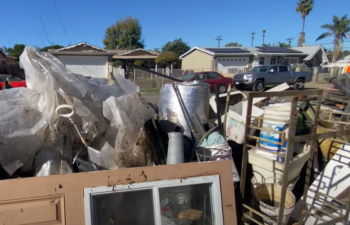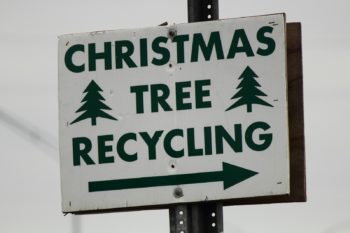If you’ve looked outside recently, you know — spring is back!
Monday is the first official day of spring. But in the last couple of weeks, our wintry rains have been replaced by warming sun — and you may have already started to daydream. “How do I add some hot colors to my dry garden? How do I control the critters in my yard? How can I “enjoy the fruits of my labor” in my backyard, or make a drought-defying California Garden?
Well, you are in luck! That’s because those are the topics of just a few of the classes — taught by Master Gardeners — that the public can enjoy Saturday at the County Operations Center in Kearny Mesa.
The Master Gardener Association of San Diego County is scheduled to hold its Spring Seminar from 8 a.m. to 3:30 p.m. March 18 at the operations center, located at 5520 Overland Avenue. There will be lectures, a marketplace, hands-on demonstrations, informational booths and more. The cost for individual classes is $15 per person; the cost for workshops is $30 per person. People can pay at the event, and attendance is reserved for adults and children 12 years old and older. The association asks people not to photograph, shoot video of, or record the event. People can see a full list of the classes and get more information about the seminar at the Master Gardener Association’s website, or by emailing them at help@mastergardenerssandiego.org.
In the meantime, here are four spring gardening tips, courtesy of Jennifer Pelham with the University of California Cooperative Extension — formerly known as the County Farm Home Advisor Program — who has been teaching master gardeners for 15 years.
-
Weeds: Get Them Early, Get Them by the Roots!
Unfortunately for many of us, there’s no surer sign that spring has arrived than weeds! Is there a cure? Not really, but you can be smart when fighting them, Pelham said. “For weeds you really need to be on top of it,” she said. “Make sure you get rid of them before they set flowers and seed again.”
So, get them early, and if you’re pulling them out, don’t snap them off at the dirt-line. Get their roots, or you’ll find yourself fighting the same weed over and over again. Pelham said if you’re going to use an herbicide like glyphosate (the active ingredient in weed-killers), make sure you spray only the weeds, not your plants (and flowers where you could kill bees and other beneficial insects). Make sure you spray the weed’s leaves so they absorb it and pass it through to the weed’s roots, which will kill the entire weed. And, Pelham said, don’t use pesticides and herbicides before a big rain, so they won’t flow off your lawn and down drainage systems to the ocean and streams. Finally, break out the mulch. Putting down three to four inches or bark or some other mulch can help suppress weeds. -
Sprinklers: Check Your Irrigation System Timers
Don’t fall into the “set ‘em and forget ‘em” mentality. You should check your system’s timers with the changing of the seasons because watering needs will change as the days and sunlight grow longer and shorter, and temperatures rise and fall. “Now that it’s getting drier and hotter out, you may need to change watering times,” Pelham said, “and adjust the schedules to whatever they need for their plants.”
-
Attract Pollinators: Protect the Food Supply
Pelham said homeowners should think about planting flowering perrenials, shrubs and trees, fruits and vegetables that can attract pollinators — honeybees, native bees and wasps, bumblebees, butterflies, hummingbirds, bats and other animals that carry pollen from one plant to fertilize others. Why? Well, because pollinator populations, especially bees, have been diminishing in recent years. And three-fourths of the world’s flowering plants, including food plants, depend on pollinators to reproduce, according to the United States Department of Agriculture. “Honeybees are responsible for 30 percent of the food supply,” Pelham said.
-
Hit the Spot: Plant the Right Plant In the Right Place
“This is one of my favorites,” Pelham said, “You have to find the right plant for the right place. For example, you don’t want to put azaleas in the sun; they like shade. You don’t want to put a fruit tree in a shaded area when they need sun to produce.” Gardeners and homeowners, she said, should look over the various environments they have — not just sun and shade, but types of soils, whether they drain quickly or slowly — and then look for plants they can use in those environments.






